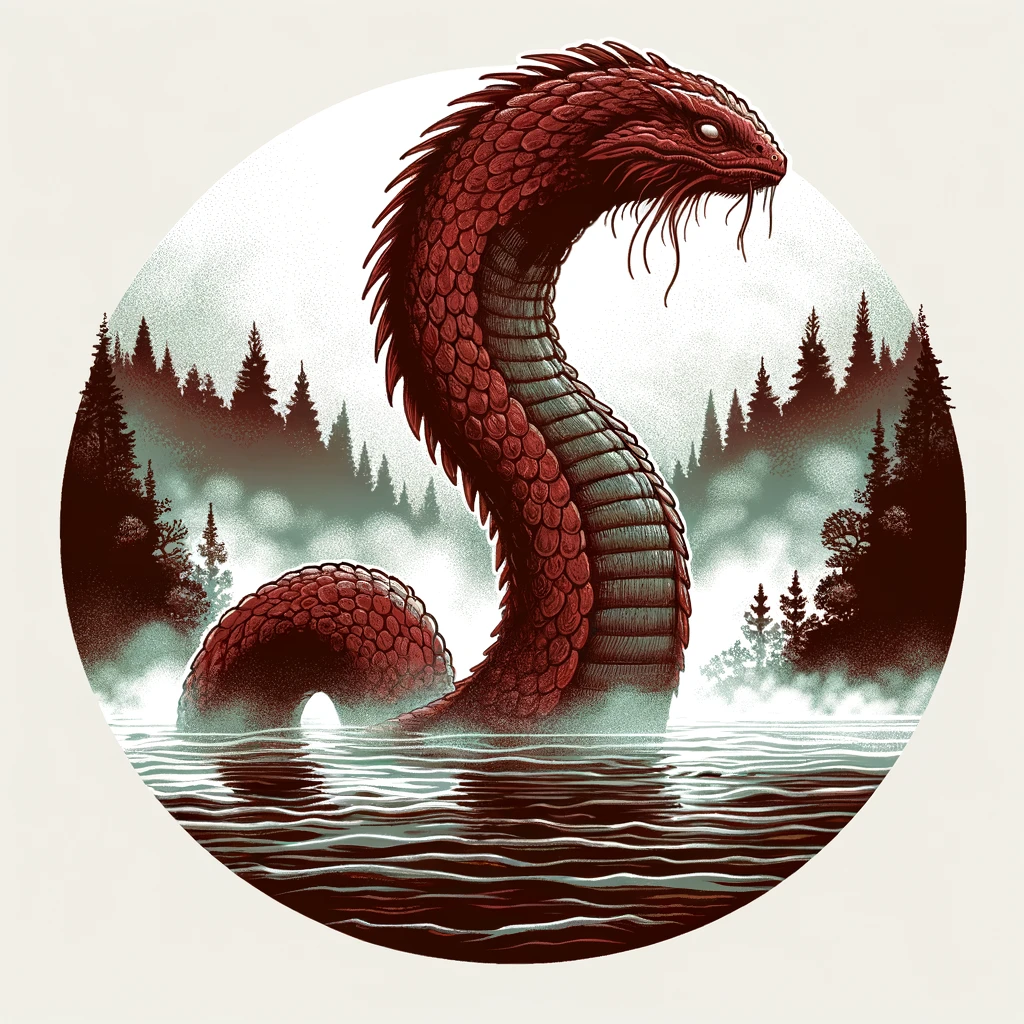Nestled in the heartland of America, where the Red River carves its way through the fertile plains of North Dakota and Minnesota, there lurks a legend that has captivated the imagination of locals and cryptid enthusiasts alike. This enigmatic creature, known as the Red River Valley Monster or Miniwashitu, is a testament to the rich tapestry of folklore and indigenous stories that are interwoven with the landscape of the American Midwest.
Origins and Descriptions
The legend of the Miniwashitu is deeply rooted in the traditions and stories of Native American tribes of the region. The name itself, often associated with a serpentine or dragon-like beast, suggests a creature of significant power and mystique. Descriptions of the Miniwashitu vary, but it is most commonly depicted as having a reddish complexion, an immense body reminiscent of a serpent or dragon, and eyes that pierce through the murkiness of the Red River’s waters.
Sightings and Lore
Though concrete evidence of the Miniwashitu remains elusive, there have been numerous reported sightings and encounters along the Red River Valley. These accounts often describe a creature emerging from the water or slithering along its banks, leaving an indelible mark on those who claim to have witnessed it. The stories of the Miniwashitu are not just tales of fear and mystery, but also of respect and coexistence with the natural world, reflecting the indigenous belief systems that emphasize harmony with nature.
Cultural Impact
The legend of the Red River Valley Monster has had a lasting impact on the culture and folklore of the region. It serves as a reminder of the mysteries that still exist in the natural world and the stories passed down through generations that seek to explain the unexplainable. The Miniwashitu has also captured the interest of cryptid hunters and folklore enthusiasts, who are drawn to the mystery and the challenge of unraveling the truth behind the legend.
Skepticism and Belief
As with many cryptids, the existence of the Miniwashitu is met with skepticism by the scientific community. Critics argue that sightings can be attributed to misidentifications of wildlife, natural phenomena, or the human mind’s propensity for creating monsters in the unknown. However, for believers and those who keep the legend alive, the Miniwashitu remains a symbol of the unknown and a reminder of the mysteries that may still lurk in the hidden corners of our world.

The Red River Valley Monster, or Miniwashitu, stands as a fascinating example of how folklore and cryptid legends can shape our understanding of the natural environment and reflect the cultural heritage of a region. Whether seen as a mythical creature to be feared or a symbol of the untamed wilderness that once dominated the American landscape, the legend of the Miniwashitu continues to intrigue and inspire, bridging the past with the present in the flowing waters of the Red River Valley.
